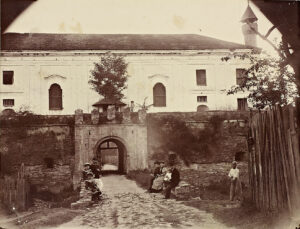Adakale, Romanya
- Tür: Kent
- Tema: Kaybolan Kültür Varlıkları
- Kültür: Osmanlı
- Yüzyıl: 17. yy
- Bölge: Romanya, Adakale
- Durum: Kayıp
1960’lı yıllara kadar 1000 kadar Türk’ün yaşadığı bu yer daha sonra baraj altında kalarak tarihin derinliklerinde kaybolmuştur.



Ada Kaleh (Romanian pronunciation: [ˈada kaˈle]; from Turkish: Adakale, meaning "Island Fortress"; Hungarian: Újorsova or Ada Kaleh; Serbian and Bulgarian: Адакале, romanised: Adakale) was a small island on the Danube, located in Romania, that was submerged during the construction of the Iron Gates hydroelectric plant in 1970. The island was about 3 kilometres (1.9 mi) downstream from Orșova and was less than two kilometers long and approximately half a kilometer wide (1.75 x 0.4–0.5 km). Ada Kaleh was inhabited by Turkish Muslims from all parts of the Ottoman Empire,[1] and there were also family ties to the Turkish Muslim populations of Vidin and Ruse, Bulgaria due to exogamic marriages.[2]
The isle of Ada Kaleh is probably the most evocative victim of the Iron Gate dam's construction. Once an Ottoman Turkish exclave that changed hands multiple times in the 18th and 19th centuries, it had a mosque and numerous twisting alleys, and was known as a free port and a smuggler's nest. The islanders produced Turkish delight, baklava, rose water, fig and rose marmalade, and rose oil, and were well-known for Turkish oil wrestling. The existence of Ada Kaleh was overlooked at the 1878 Congress of Berlin peace talks surrounding the Russo-Turkish War, known in Romania as the War of Independence, which allowed the island to remain a de jure possession of the Ottoman Sultan until 1923.
- ^ Vainovski-Mihai, Irina and Grigore, George (January 2019). "From Dobrudja to Ada-Kaleh: A Bridge between Empires". Romano-Arabica.
- ^ "Ada Kaleh, an Ottoman Atlantis on the Danube". 25 February 2015.


